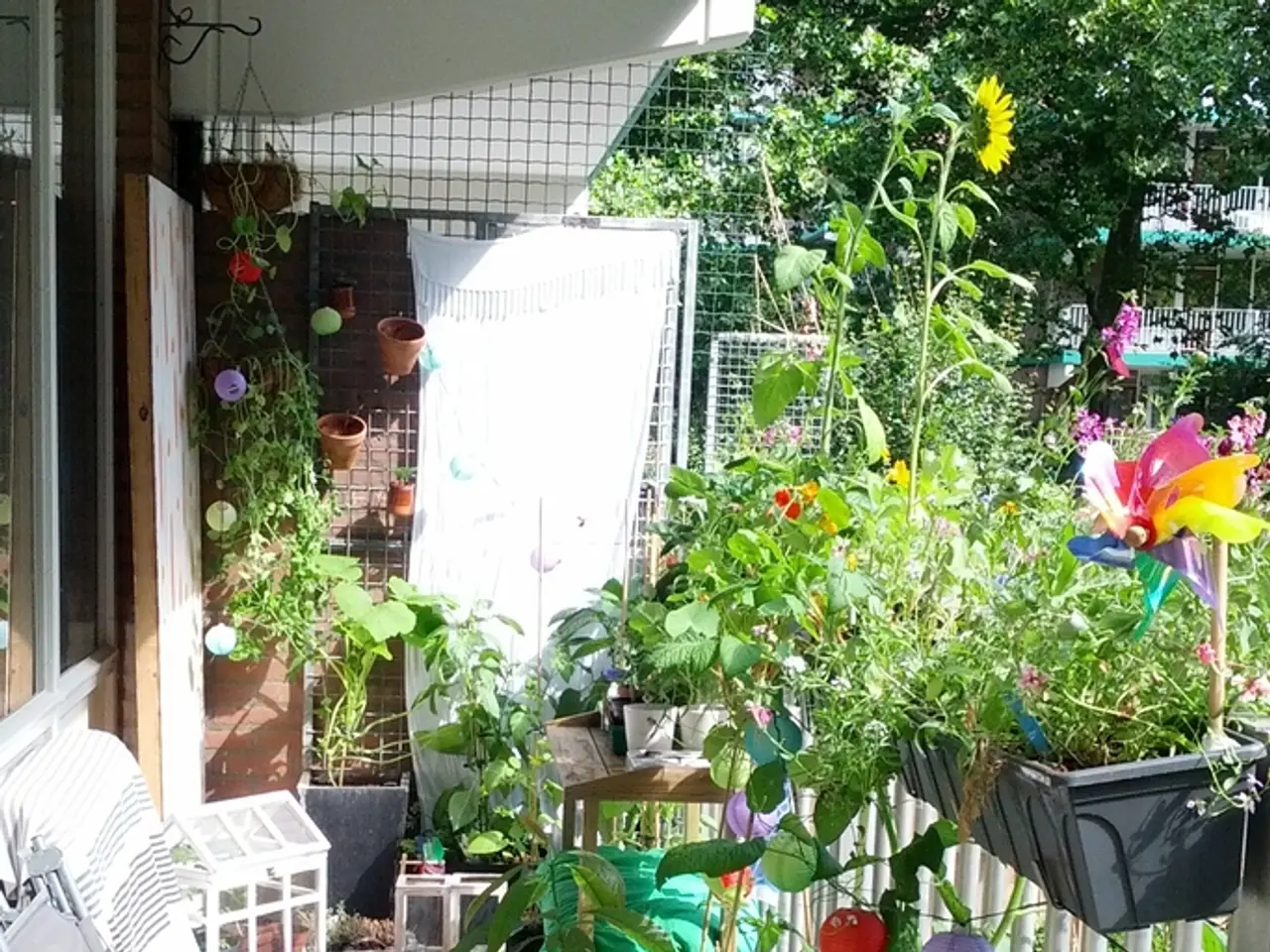Modern country garden style blends with contemporary elements, catering to inexperienced gardening duo in this artistic garden setup
In the heart of Cambridge, Robert Myers' contemporary garden design at Park House, a Grade II-listed house built in 1854, has revitalised the outdoor space with a focus on wildlife-friendliness and historic charm.
The garden, installed in 2020 during the first Covid lockdown, presents an expanse of lawn on the south side, a nod to the original historic design, offering long, uninterrupted views from the house over the whole site. The beds are sandwiched between a diagonal pathway and another straight path in front of the kitchen, traversed by narrow gravel paths that immerse you in the planting as you travel along them, while providing glimpses of reflective water tanks made from Corten steel, which provide structure and interest in winter.
Myers' design strategy combines careful plant selection aimed at supporting biodiversity with functional water tanks that also contribute to wildlife habitat creation. Many of the trees in the old orchard have been replaced with a range of apples, pears, and walnuts, providing food for local wildlife. The beds are flooded with tulips in spring, followed by a succession of alliums, euphorbias, and geraniums, offering a rich palette of colours and scents to attract pollinators.
Myers has combined several ornamental grasses and pollen-rich perennials, such as Veronicastrum virginicum 'Fascination', Agastache 'Blue Boa', Salvia nemorosa 'Caradonna', Penstemon 'Raven', Calamagrostis x acutiflora 'Karl Foerster', and Sesleria autumnalis, to increase biodiversity. The garden also includes hedges and trees for nesting, water to sustain various garden creatures, and climate-resilient planting to support insect populations.
The masterplan for the landscape at Park House delivers a succession of food and habitats for wildlife throughout the year. The walled garden surrounding the pool includes more perennials and grasses, and a new greenhouse and informal kitchen garden lie beyond the pool house on the north side. The west-facing terrace provides space for dining outside, offering views over perennial flower and grass beds and the meadow beyond.
Robert Myers aimed to create a flower-filled contemporary garden around Park House near Cambridge, supporting local wildlife and staying true to the historic setting. His Worcestershire-based practice, which won multiple RHS Chelsea Gold medals, specializes in contemporary gardens that integrate well with historic landscapes, including projects in Cambridgeshire.
Sharon and David Smith, owners of Park House, developed a new-found passion for plants and love of nature while caring for their restored garden during Covid lockdowns. They have been maintaining the garden, finding it relaxing and rewarding, and have added to Myers' original list of plants.
In conclusion, Myers' design at Park House reflects his signature integration of contemporary aesthetics with ecological sensitivity, creating a garden that is both visually stunning and beneficial for local wildlife.
- Amidst the historic charm of Cambridge, the contemporary garden design by Robert Myers at Park House caters to biodiversity and features a blend of flowers, plants, and ornamental grasses.
- The garden, installed in 2020, encompasses an expansive lawn, a symbol of the original design, showcasing a landscape that offers captivating vistas over the entire site during the spring and summer months.
- A series of water tanks made from Corten steel can be found scattered across the garden, providing both structure and habitat for local wildlife in the winter season.
- To attract pollinators and increase biodiversity, Myers specifically chose perennials like Veronicastrum virginicum 'Fascination', Agastache 'Blue Boa', and Salvia nemorosa 'Caradonna'.
- The Smith family, who own Park House, have become enthusiasts of gardening and nature throughout their experience caring for the garden during lockdowns, subsequently expanding Myers' initial plant selection.




